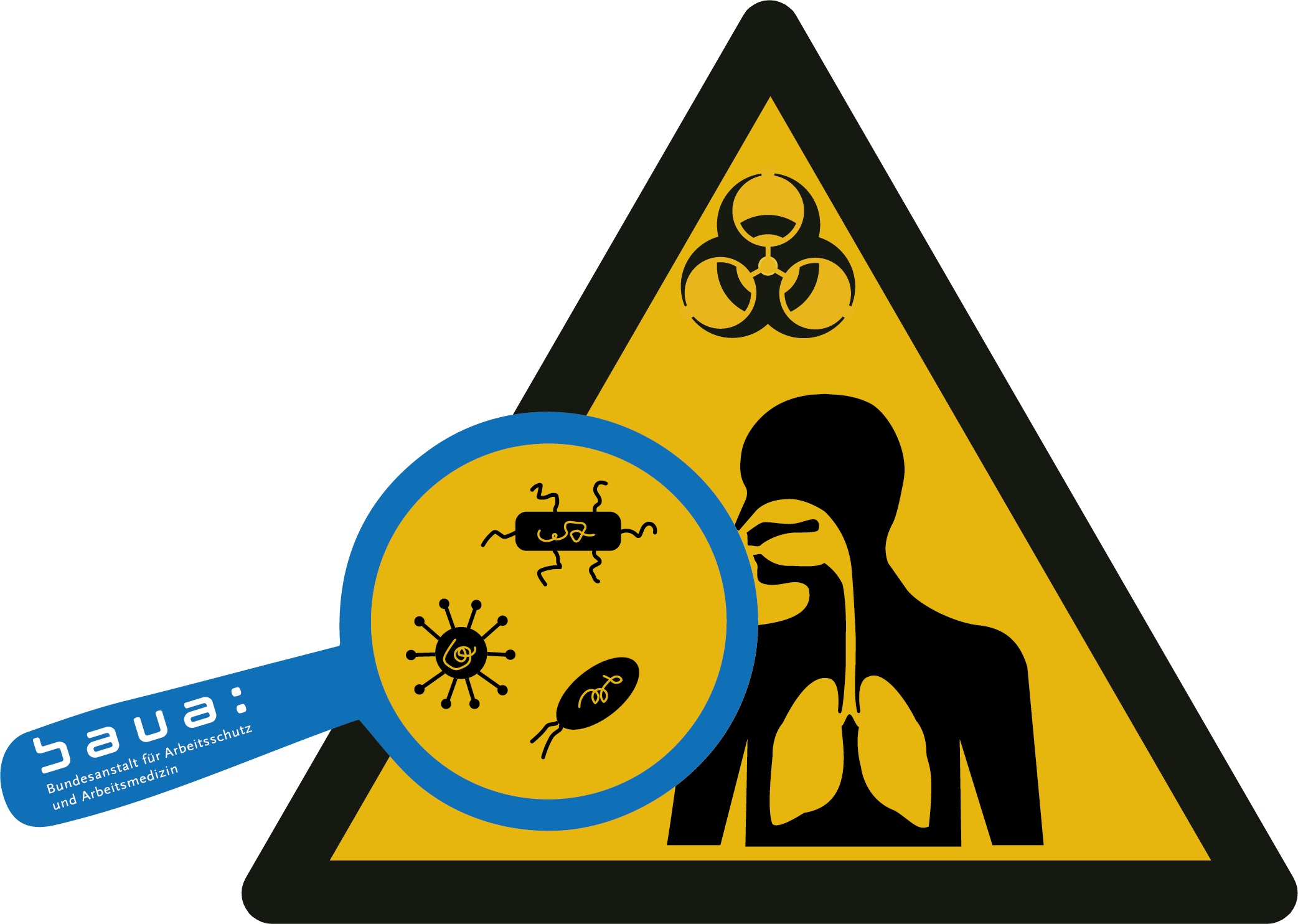New approaches for the measurement and risk assessment of airborne biological agents
It is difficult to assess the risks posed by activities involving high rates of exposure to complex mixtures of airborne biological agents. There is a lack of appropriate measurement and evaluation methods. The Federal Institute for Occupational Safety and Health (BAuA) is therefore conducting intensive research into bioaerosols.
Micro-organisms are found everywhere. This means that our skin, our digestive systems and our airways come into contact with them every day. In comparison with normal exposure, which is generally harmless, many employees experience additional exposure to airborne micro-organisms at their places of workplaces, however. This is primarily the case in two large areas:
- areas of work in which employees carry out activities with materials or living organisms which represent the natural living environment of the micro-organisms (soil, water, plants, as well as animals and people)
- areas of work which are colonised by micro-organisms during the production process, whether this is considered desirable (food refinement, for example), or undesirable (cooling lubricants, for example)
In these contexts, the concentrations of airborne micro-organisms can reach 10,000 times the normal levels.
Depending on the type of biological agent, the level of exposure, its duration and the individual's state of health, such exposure can put the health of employees at risk. The hazards range from infections through to toxic or sensitising effects.

Biological agents in risk assessment
On the basis of the possible risks, the Safety and Health at Work Act and the Accident Prevention Regulation "Principles of Prevention" of the German Social Accident Insurance (DGUV) oblige all employers to assess potential hazards posed to the employee according to the activities that they carry out. Depending on this assessment, employers must also specify protective measures and document the results of their evaluations. This procedure, which is known as a "risk assessment", is the key element in ensuring safety at the workplace. It provides the basis for systematic and successful health and safety management (GDA, 2011).
As a general rule, the employer must obtain information such as the identity, infection potential as well as sensitising and toxic characteristics of biological agents which pose a potential hazard to employees. Information on the following must also be provided (Biological Agents Ordinance, BioStoffV):
- exposure scenarios, including the type, level and duration of exposure
- associated transfer possibilities
- occupational diseases known to be associated with exposure
The path to a status quo for bioaerosols
In the overwhelming majority of the stated sectors, insufficient information is available to complete risk assessment as required. There are various reasons for the knowledge gaps. There is no obligation for determining exposure levels. Among others, this means that standardised methods of collection and measurement are only available for a limited number of parameters. For many parameters, results from scientific literature are not fit for comparison, or can only be transferred to other areas of work to a limited extent.
For many workplaces, the biological agents that a bioaerosol contains remain unknown. This is because the culture-based methods currently used are unable to capture all micro-organisms. In addition to the identification of biological agents, their quantification, and therefore assessing exposure to them, is problematic. Also, little is known about the sensitising and toxic characteristics of biological agents. Causal relationships between individual parameters and the occurrence of specific illnesses cannot, therefore, be derived, or only to a limited extent.
To close existing knowledge gaps, as a departmental research institute, BAuA maintains laboratories in which its employees work on developing new methods of measurement and instruments of assessment, and are presently conducting scientific field research into bioaerosols at the workplace.